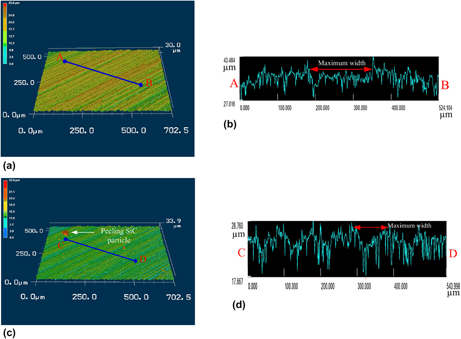No CrossRef data available.
Published online by Cambridge University Press: 22 February 2016

Bulk cementite samples with chromium (Cr) concentrations of 0, 3.01, 6.03, 8.22, and 9.76 wt% were prepared by mechanical alloying and spark plasma sintering. The elastic modulus, elastic recovery, and hardness increased with increasing chromium content. The maximum microhardness was 1070.74 HV (Vickers hardness) and the maximum elastic modulus was 199.32 GPa using a nanoindentation device. The effect of different concentrations of Cr on the wear behavior of the cementite plowing depth, roughness, debris from the worn surfaces, and weight loss due to wear were measured using pin-on-disk tribometric equipment. It was found that both the morphology and the abrasion resistance of a surface worn by microcutting and microplowing increased markedly with increasing Cr content.